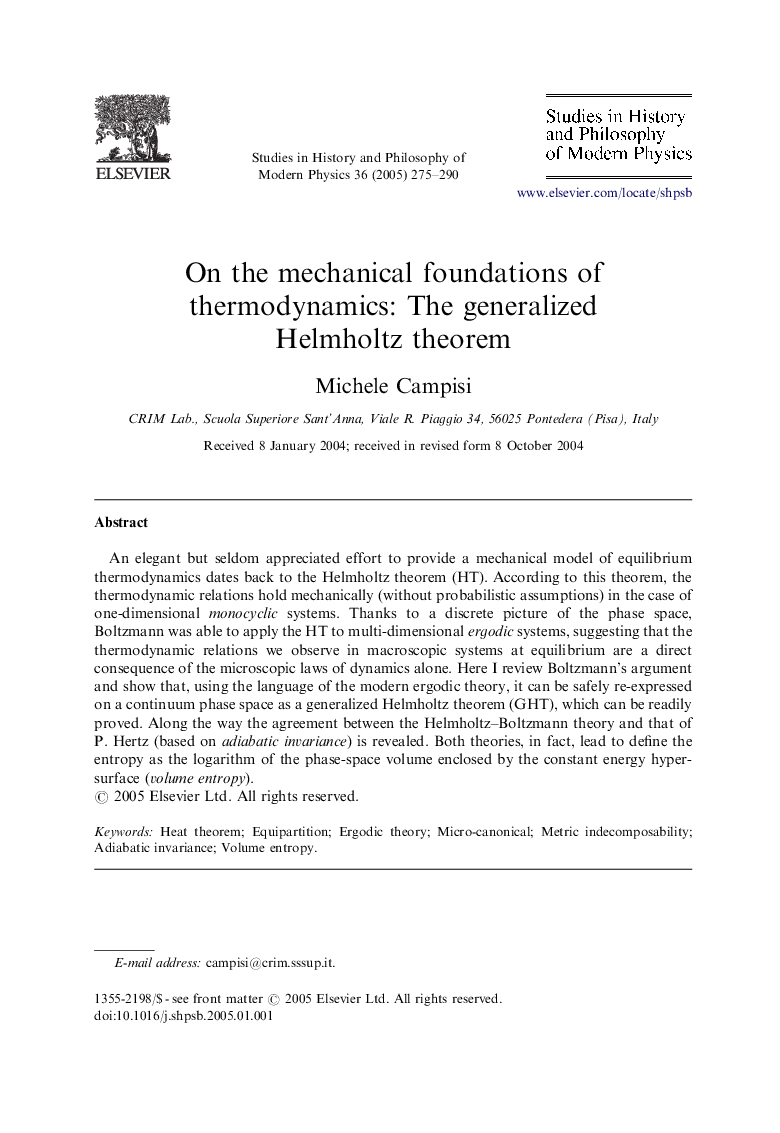| Article ID | Journal | Published Year | Pages | File Type |
|---|---|---|---|---|
| 9742845 | Studies in History and Philosophy of Science Part B: Studies in History and Philosophy of Modern Physics | 2005 | 16 Pages |
Abstract
An elegant but seldom appreciated effort to provide a mechanical model of equilibrium thermodynamics dates back to the Helmholtz theorem (HT). According to this theorem, the thermodynamic relations hold mechanically (without probabilistic assumptions) in the case of one-dimensional monocyclic systems. Thanks to a discrete picture of the phase space, Boltzmann was able to apply the HT to multi-dimensional ergodic systems, suggesting that the thermodynamic relations we observe in macroscopic systems at equilibrium are a direct consequence of the microscopic laws of dynamics alone. Here I review Boltzmann's argument and show that, using the language of the modern ergodic theory, it can be safely re-expressed on a continuum phase space as a generalized Helmholtz theorem (GHT), which can be readily proved. Along the way the agreement between the Helmholtz-Boltzmann theory and that of P. Hertz (based on adiabatic invariance) is revealed. Both theories, in fact, lead to define the entropy as the logarithm of the phase-space volume enclosed by the constant energy hyper-surface (volume entropy).
Related Topics
Physical Sciences and Engineering
Physics and Astronomy
Physics and Astronomy (General)
Authors
Michele Campisi,
